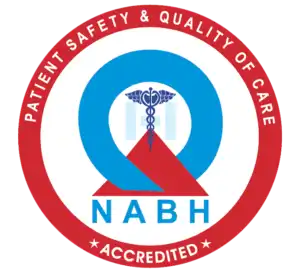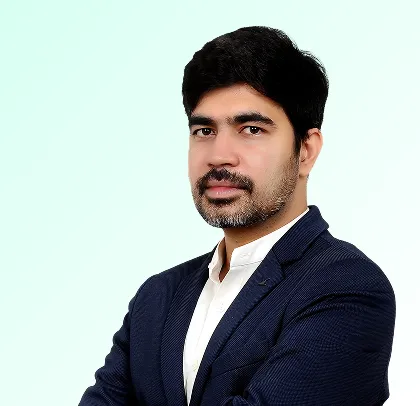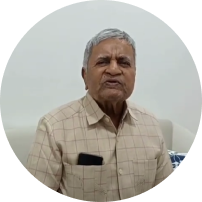Migraine Headache Treatment in Bangalore
At Epione Pain Management Center, we understand that Migraine is a neurological condition that causes severe, debilitating headaches that can affect the quality of life of the patients. Our team specializes in migraine headache treatment in Bangalore, offering comprehensive care for those who suffer from chronic or episodic migraines.

Best Hospital in Bangalore for all Migraine Headache Conditions
At Epione, we are focused on providing the best headache Treatment in Bangalore. Our experienced headache doctors offer personalized pain management solutions designed to alleviate migraine pain and improve your quality of life.

Chronic Migraine
It is defined as having a headache at least 15 days per month, with 8 of those days being migraines. These migraines can last for hours or days and often cause frequent headaches, increased sensitivity to light, sound, or smells, nausea, and vomiting.

Vestibular Migraine
It is also known as migrainous vertigo, where people experience a combination of vertigo, dizziness, or balance problems with other migraine symptoms.

Hemiplegic Migraine
It an rare and severe, where a person will experience a temporary weakness on one side of their body as part of their migraine attack.

Migraine with Aura
Aura refers to neurological disturbances that affect your sight, such as blind spots or seeing flashing lights.

Menstrual Migraine
Migraine attacks more women than men; menstrual migraine is linked to hormonal changes during the menstrual cycle that occur with the period.

Migraine Overuse Headache
Medication overuse headache that results from the frequent use of acute medicines or painkillers, leading to worsening symptoms.

Abdominal Migraine
Abdominal Migraine - It affects 4 in 100 children and also some adults and includes symptoms like stomach pain, feeling sick & vomiting, no headache, and nausea.
When to see a doctor for a Migraine Headache
See a doctor if you experience a headache that –

Your headache is continuous for more than a day or two

Your headache pain is worsened by straining

You’re experiencing changes in vision

Have a headache after a head injury or accident

Your headache affects your sleep, activity level, or work

Your headaches are occurring more often or becoming more severe

A morning headache with nausea that doesn’t go away
Diagnosis
At Epione, the Migraine Pain diagnosis process is designed to provide a personalized and clear understanding of your Migraine Headache pain:

Medical History
Our doctors review your symptoms, previous injuries, and medical history to understand potential triggers or underlying causes.

Medical Exam
The doctor will do a neurological examination to check reflexes and see how you respond to sensations.

MRI or CT Scan
If your pain comes suddenly or you have other symptoms, an MRI or CT scan can help identify the cause of your pain, such as tumors, bleeding, abnormalities, or other causes.

Magnetic Resonance Angiogram (MRA)
An MRA is an imaging technique used to check for abnormalities, such as aneurysms, in the brain's blood vessels.

Blood Test
Doctors might perform blood tests that can help to evaluate other health conditions contributing to migraine headaches.

Lumbar Puncture
The doctor might analyze for abnormal substances to help diagnose infections, including meningitis and encephalitis, inflammatory conditions of the nervous system, and cancers involving the brain.
Treatment
Epione offers a variety of non-surgical treatment options depending on the cause and severity of the pain,
Medications
For managing headaches, over-the-counter analgesics like aspirin and paracetamol are typically sufficient for mild to moderate episodes. Other painkillers and caffeine can also help abort acute attacks. In severe cases, a combination of drugs, including opioids, may be used.

Botox Injection
It’s a new technique to treat chronic migraine by interfering with the transmission of the substances called neurotransmitters and molecules, typically where the nerves and muscles meet.

Relaxation Techniques
These techniques help control responses to stress, which is a common migraine trigger. By learning to manage stress effectively, patients can reduce the frequency and intensity of their migraines.

Acupuncture
Acupuncture helps to balance energy flow by placing needles at specific pressure points, which can slow pain transmission.

Why choose Epione pain management for migraine headache treatment?
At Epione, we are committed to providing a comprehensive, systematic, and personalized approach to treating migraine Pain.

Expert Team:
Our team consists of experienced specialists who are experts in migraine pain management.

Advanced Treatments:
We use cutting-edge technology and advanced pain management techniques to provide relief and improve migraine Pain.

Customized Treatment Plans:
We offer personalized treatment plans that are tailored to your unique condition and goals. Each patient undergoes a thorough assessment to ensure the right approach is taken.

Our Doctors
Reviews
Very good doctor. Suffering from knee pain from last 4 years and didn’t want to get a surgery. They treated my knee pain without surgery with stem cell therapy. I am very happy with the results.
Meghana Reddy

By far the best pain management specialists in town. After consulting several places with no effect, Epione made sure that they treated my mother’s delicate pain condition with patience.
Deepthi K

Frequently Asked Questions
What lifestyle factors contribute to migraine headaches?
Migraine headaches occur due to lifestyle factors like poor quality sleep, stress, medications, diet, and physical activities.
How do I know if my migraine headache is serious?
If you experience severe headache, vision distortions, nausea & vomiting, dizziness, or severe weakness along with headache, it could indicate a serious underlying condition.
What happens if a migraine headache is left untreated?
If migraine headache is left untreated, it might transform into a chronic daily headache, increase the frequency of attacks, and can cause long-term health effects.
What should I expect during my first consultation for migraine headaches?
During your consultation, we will ask about your symptoms and medical history, conduct a physical examination, and perform imaging tests to understand the cause of your pain.
Does Epione offer non-surgical treatment for migraine headaches?
Yes, Epione offers non-surgical treatment for migraine headaches.












